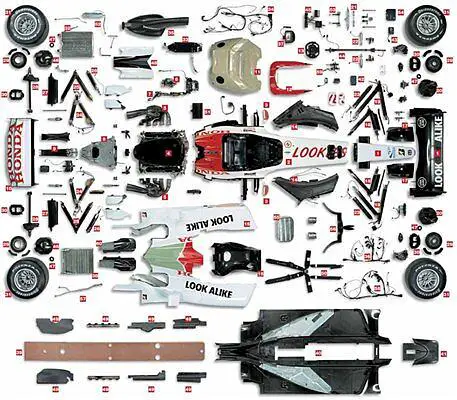Formula 1 is a sport where drivers are constantly pushing the limits of speed and performance. However, this also means that they risk damaging their cars in accidents or technical failures. In such cases, do F1 teams have spare cars that they can use during a race weekend? And how many cars do they actually have at their disposal?
Two Formula 1 Cars Per Team

The answer is simple: F1 teams are allowed to enter a race with two cars each. This means that each driver has a car, and there are no spare cars. However, teams carry enough spare parts to every race to entirely rebuild the car. This is irrespective of how much damage it suffers.
The reason F1 teams are only allowed to bring two cars is that it helps to save costs. Logistically, having a third car would mean that teams need to spend more money not only to transport their third car to each race venue but also to rebuild and take apart their third car to transport them. On the other hand, spare parts are already broken down into smaller pieces and are easier to transport from one race venue to another.
Spare Parts and Upgrades For Formula 1 Cars

While F1 teams only have two cars, they can change almost everything on the car throughout the season. This includes everything from the engine to the rear wing and other aerodynamic parts2. Sometimes these changes will be necessitated by an accident, but other times, the changes will be voluntary, as teams seek to upgrade the car as the season progresses.
The only thing that teams don’t change around very often is the chassis, which includes the cockpit. This is sometimes changed, but not nearly as often as other parts. Sometimes, if the car is involved in a significant accident, it will be replaced entirely.
All these changes mean that by the time the season is over, the car is entirely different from what it was like when it started. It has usually been changed around multiple times to ensure that it remains competitive.
No Spare Formula 1 Cars Allowed
In the past, Formula 1 teams used to have entire spare cars that they would take to the race weekend. This would usually be one extra care, but in some cases, it would be two. These would be kept in the garage and could be used by drivers if they had issues with their cars. These could be used in the first two laps if the original car could not be repaired in time.
Spare cars were banned in 2003. Teams still have a lot of wiggle room during the race weekend to repair damaged cars. Teams will bring spare parts for all the components of a Formula 1 car. If a driver crashes during the practice or qualifying sessions, they can still participate in the race. The teams carry enough spares to repair the entire car.
However, there are some limits to what can be changed and when. Teams have to use a certain number of engines and gearboxes per season. Changing them before they reach their limit incurs penalties. Teams have to respect certain rules regarding parc fermé conditions. This means that they cannot make significant changes to the car after qualifying.
Three Cars Per Team?
The possibility of changing the limit to three cars was suggested as a point of discussion in 2018. They argued that having three cars per team could increase competition and diversity on the grid. It would also provide more opportunities for young drivers.
However, this idea was met with resistance from some teams and drivers. They argued that it would increase costs and create unfair advantages for bigger teams. The proposal was also seen as a threat to smaller teams. These might struggle to survive if they had to compete with three-car teams.
As of now, there are no plans to change the limit of two cars per team in Formula 1. However, this could change in the future if there are significant changes in the sport’s regulations or financial situation.

